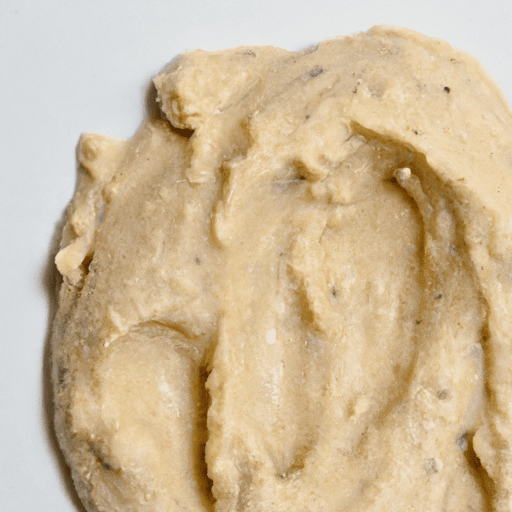All About Almond Paste: A Versatile Delight in Cooking
Almond paste is a heavenly ingredient that adds a touch of indulgence to countless recipes. Made from finely ground almonds, sugar, and a hint of almond extract, this sweet and velvety condiment has a rich, nutty flavor that captures the essence of almonds in every bite. Whether you’re a culinary connoisseur or a cooking enthusiast, almond paste is a must-have in your pantry.
Taste and Texture
When you taste almond paste, prepare to be delighted by its distinct flavor profile. Each spoonful delivers a pleasing balance of sweetness and almond goodness. The smooth and creamy texture enhances the overall experience, making it a delightful addition to both savory and sweet dishes.
Common Uses in Cooking
Almond paste is incredibly versatile, lending itself to a myriad of culinary creations. Here are some popular uses for this delectable ingredient:
Pastries: Almond paste is a star player in bakery favorites such as almond croissants, tarts, and danishes. Its sweet and nutty taste pairs perfectly with delicate pastry dough, creating a match made in dessert heaven.
Cakes and Cookies: Elevate your baking game by incorporating almond paste into cakes and cookies. Whether you opt for an almond pound cake, almond macarons, or soft and chewy almond cookies, this ingredient provides a fragrant and flavorful twist to classic recipes.
Marzipan: Almond paste is the key ingredient in marzipan, a popular confectionery used to create decorative shapes and figures. Explore your artistic side and sculpt marzipan fruits, animals, or even miniatures of well-known landmarks.
Fillings and Frostings: Almond paste brings a sumptuous texture and taste to fillings and frostings. Use it to fill pastries, muffins, or even as a delectable layer in a cake. Its versatility enables you to experiment and personalize your creations.
Nutritional Value
Almond paste not only impresses with its delightful taste but also boasts some impressive nutritional qualities. Here’s a breakdown of its key benefits:
Protein: Almonds are naturally high in protein, making almond paste a valuable addition to a balanced diet. Protein is essential for cell growth and repair, ensuring your body stays healthy and strong.
Healthy Fats: Almonds contain heart-healthy monounsaturated fats, which help lower bad cholesterol levels and reduce the risk of heart disease.
Vitamins and Minerals: Almond paste is a significant source of vitamin E, an antioxidant that supports skin health and protects cells from damage. It also contains magnesium, which plays a vital role in various bodily functions.
Fiber: Almonds are rich in dietary fiber, promoting digestive health and aiding in maintaining a healthy weight.
Though almond paste is nutritious, it is important to consume it in moderation due to its high caloric content. Always be mindful of portion sizes to fully enjoy its benefits without overindulging.
Historical Significance and Fun Facts
Almond paste has a fascinating history that dates back centuries. Here are a few intriguing facts:
Almonds have been cultivated and enjoyed since ancient times, with traces of their consumption found in archaeological sites spanning thousands of years.
Marzipan, made with almond paste, was documented as early as the 9th century. It gained popularity through the Middle Ages and became a staple in European confectionery.
Today, marzipan is often shaped into fruits, like miniature apples, pears, or oranges, and gifted during Christmas time, especially in European countries.
Almond paste is celebrated in various cultural cuisines, including those of France, Italy, Middle Eastern countries, and Scandinavia. Each region incorporates this ingredient in unique ways, adding distinct flavors to their traditional dishes.
Conclusion
Almond paste is truly a culinary gem, offering a delightful taste and endless possibilities in the kitchen. From delicate pastries to luscious fillings, this versatile ingredient can elevate any recipe with its distinct flavor and creamy texture. Whether you’re an aspiring baker or an adventurous home cook, let almond paste be your secret weapon to creating unforgettable dishes that will leave everyone asking for more.
Interesting Facts About Almond Paste:
Origin: Almond paste is believed to have originated in the Middle East, specifically in Persia (modern-day Iran) and the Mediterranean region. It has been used in various culinary traditions for centuries.
Ingredients: Almond paste is primarily made from ground almonds and sugar. The almonds are blanched (skin removed) and finely ground before being mixed with sugar to form a smooth, thick paste.
Common Uses: Almond paste is commonly used in pastry and confectionery. It is a key ingredient in many traditional European desserts, such as marzipan, stollen, and frangipane. It is also used to fill pastries, cakes, and cookies, and can be molded into various shapes for decoration.
Nutritional Benefits: Almond paste is a good source of healthy fats, protein, and fiber. It also contains vitamins and minerals, including vitamin E, magnesium, and calcium. However, it is high in calories and should be consumed in moderation.
Unique Properties: Almond paste has a rich, sweet, and nutty flavor and a smooth, pliable texture. It can be easily shaped and molded, making it versatile for decorative purposes. Almond paste is often used to create intricate designs or figures for cakes and pastries due to its ability to hold its shape.
Historical Significance: Almond paste has been used in culinary traditions dating back to ancient times. It was highly regarded in medieval European cuisine and was used not only as a sweet ingredient but also as a base for savory dishes such as sauces and stews. Across cultures, almond paste has maintained its popularity and continues to be a cherished ingredient in traditional desserts.




Use the share button below if you liked it.
It makes me smile, when I see it.